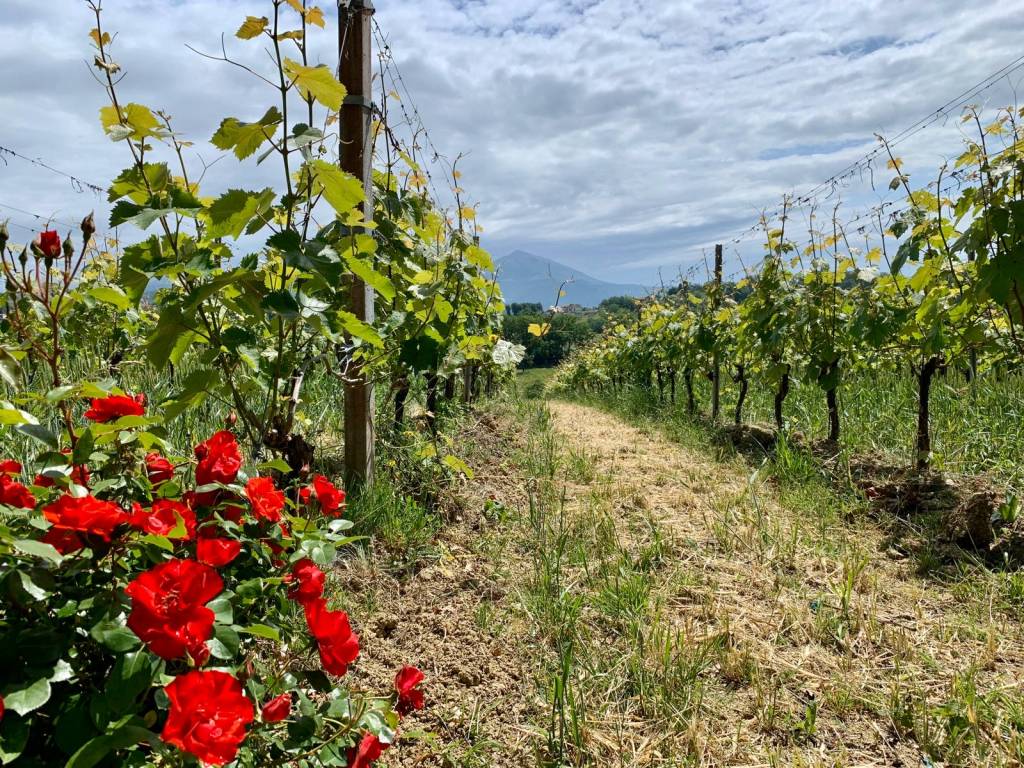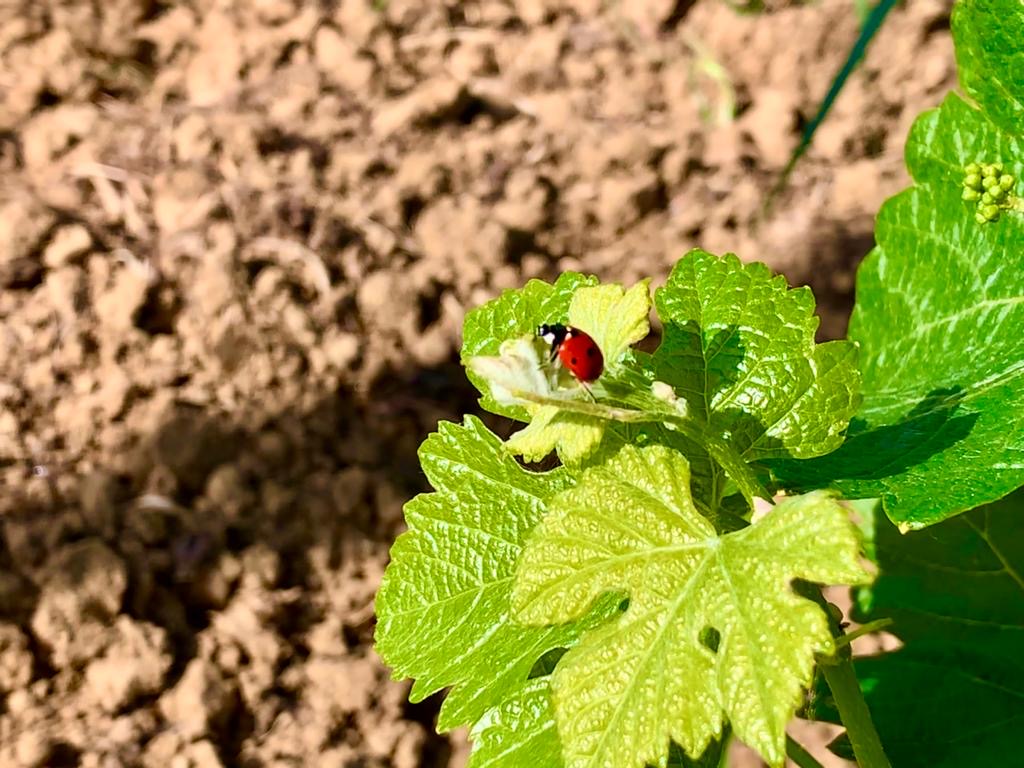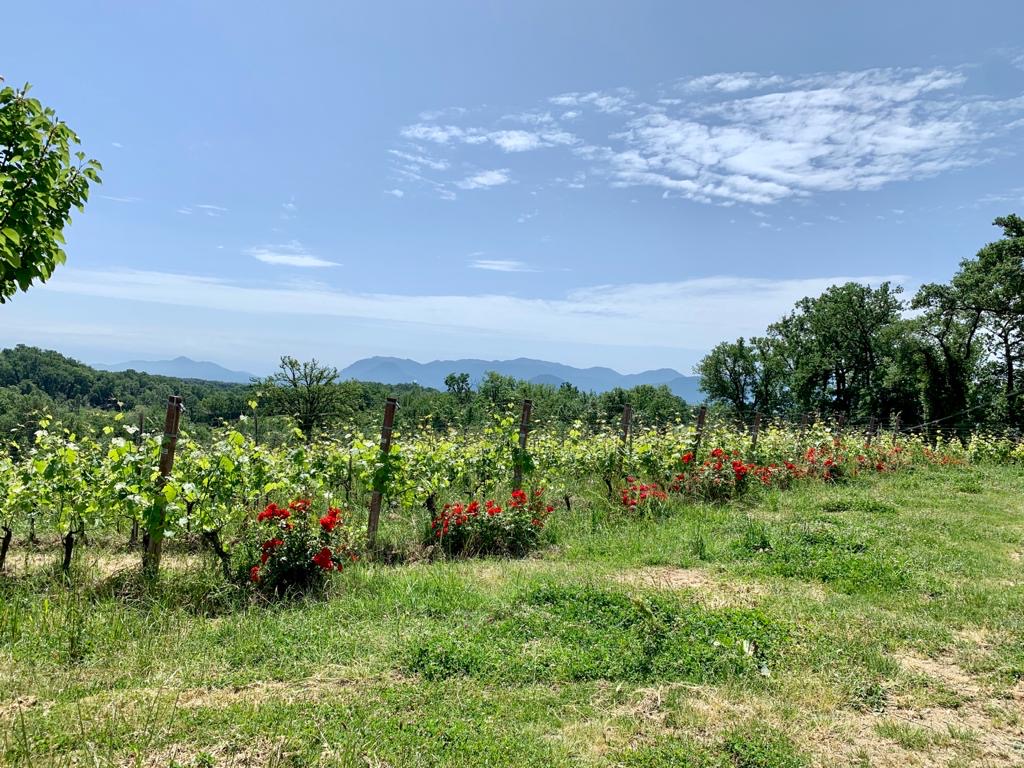The roses are in full bloom now on the vineyard but why are roses traditionally grown at the end of rows on a vineyard?
Originally, roses were planted in vineyards as an early warning sign, roses and grape vines are both prone to the infestation of a fungus known as powdery mildew, this is the most widespread fungal diseases of grapevines in the world. If this fungus appeared on the roses, the vines would be treated to prevent the grapes from being destroyed. Downy mildew is another fungus that attacks the green parts of the grape vine. If detected on a rose bush the grape vines were immediately treated.
Prevention is Better Than Cure
According to biodynamic principles and practices the basic approach is preventative, infusions of several different plants including horsetail, dandelion, nettle, valerian and yarrow are prepared and applied onto the vines and the soil throughout the year. These strengthen the vine against disease rather than having to combat an actual outbreak already afflicting it.
These days most vineyards use modern methods to monitor carefully the soil and health of the vines. Rose bushes are no longer required, so why are they still grown? Apart from looking pretty they provide food for bees and habitat for insects that are beneficial to the vineyard. Roses are tastier than grape vines to pests, so they draw these damaging insects away from the grapes.






